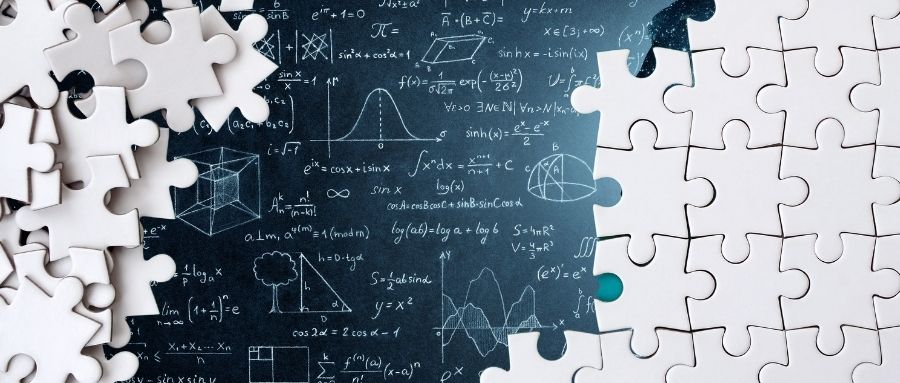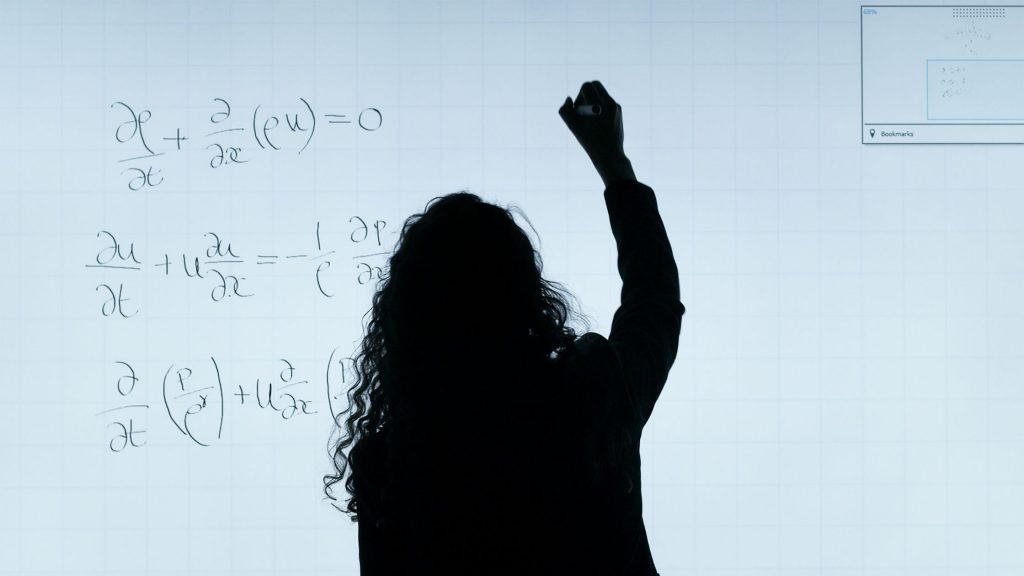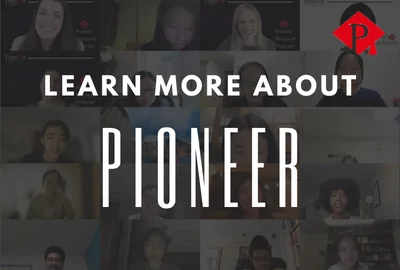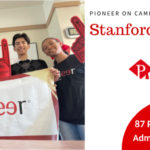Research in mathematics looks a bit different than any of the other research areas at Pioneer. While some mathematics students in interdisciplinary or applied fields use the scientific method of inquiry, pure mathematics research is often more like solving a puzzle. When faced with the same puzzle, different Pioneer scholars will use a variety of strategies to find a solution. These strategies can be as sophisticated as using programs like MatLab or as low-tech as working out a problem with paper and a pen. The problem-solving process in and of itself forms the methodology of these research papers. All math research, whether interdisciplinary, applied, or pure, involves sharp critical thinking, creativity and problem-solving skills.
In pure mathematics, Pioneer scholars liken research to solving a puzzle
Oluwatobi (math, 2020), a Pioneer scholar from Nigeria, used creative problem-solving to generate a tiling equation. “The process was a lot of trial and error,” she says. In order to visualize the problem, she filled a notebook with pages of tiny, hand-drawn squares. She emphasizes the difference between pure mathematics research and research in other fields. “It’s not the same as other subjects where they get a topic, ask a question and do observations. For the most part, we do an experiment and ask a question at the beginning of the process, and see if the progress makes sense. From there you have a topic and something to write about,” she explains. Areebah (math, 2020), a Pioneer scholar from Bangladesh, also worked with tiling but used different strategies. “My work process was that I went through the problems, I understood the tiling process, and I made my own tiles and played around with them. Finally, when I got some inspiration, I opened an Excel document and made a bunch of sequences and played around with them. I got about ten of them wrong before finding something else,” she says.
Ishaan (math, 2020), a Pioneer scholar from India, focused his research on combinatorics and graph theory. Like Oluwatobi, he took a low-tech approach to research, working out problems with a sheet of paper and a pen. “Mathematics research is very exploration based. There’s no field experience or data collection involved in the majority of cases. For me, mathematics research was just me with a pen and a blank sheet of paper. At the start, I had a broad problem that I wanted to address, which is generalizing strategies for two-player Sudoku. The rest was just seeing where it went. I took a stack of blank sheets and a pen and drew a ton of Sudoku grids and tried to come up with winning strategies.”
When conducting applied or interdisciplinary math research, Pioneer scholars keep the same problem-solving spirit but apply a more conventional research methodology
Pioneer scholars who conduct applied or interdisciplinary math research tend to follow a more typical research methodology (using computer programming tools to analyze data, generate something, predict, simulate or model something). They begin with a research question and seek to answer it through inquiry and experimentation. Aurora (math/physics, 2020), a Pioneer scholar from China, did research in an interdisciplinary concentration that combined physics and math. Her paper studies recordings of childrens’ voices and analyzes their components using MatLab. “To answer my research questions, I started with data collection. I found kids screaming and crying on Youtube. Then, I conducted an analysis with MatLab to decompose the sounds into an amplitude against frequency graph so I could visualize the sound waves,” she explains.
Taimur (math, 2021), a Pioneer scholar from Dubai, conducted his research in coding theory and cryptography, an interdisciplinary area between mathematics and computer science. “My paper tackled the problem of finding maximal codes; that is, the code of given length and minimal distance with the largest number of codewords. I proposed an optimization known as ‘simulated annealing’ to find values for these maximal code sizes,” he explains. Simulated annealing is an optimization algorithm that is modeled after the heating and cooling of metals. “In the literature, there were applications of simulated annealing, but not for the specific coding problem that I wanted to solve. So, in a sense, I was combining ideas,” Taimur says. In this way, he was able to contribute new knowledge to the field.
Subha (math, 2021), a Pioneer scholar from the United States, used game theory to analyze the refugee crisis at the US-Mexico border. “It was a lot less math than you would expect from a normal game theory paper,” she acknowledges. Instead, Subha used immigration policy as a source of data and analyzed the issue through the lens of game theory. “I wanted to take the behavior of the actors, both Mexico and the US, and model it as a zero-sum game. I did research on policies they had implemented recently and in the past… I decided to present this information in a chart as a zero-sum game,” she explains.
Vinh(astronomy/physics, 2020), a Pioneer scholar from the United States, also did interdisciplinary research. Although Vinh’s research area was astronomy/physics, both his research concentration and research topic were highly mathematical. Vinh read through papers about LIGO (Laser Interferometer Gravitational-Wave Observatory) and found an aspect in the existing algorithms that he could verify himself using the computer tools available to him. “When developing my methodology, I had two goals. First, that it would help me answer my research question; second, that it was accessible to me as a high school student conducting online research,” he explains. He researched a better way to evaluate noise contamination. “My paper focused on determining the efficiency of two detection algorithms in different conditions. Obviously, when writing my methodology, I had to decide the conditions and test cases to use…. I had access to an online catalog of common glitches, and I chose which ones would work for me.” Vinh used the computer program Python to simulate noise contamination of data and was then able to evaluate matched filtering search algorithms.
Math research at Pioneer takes many forms. It has little to do with the rote memorization of formulas common in high school curricula, and in many cases its methodology differs greatly from that of other research fields. Depending on their concentration, Pioneer scholars may use different strategies to solve the same problems or work on interdisciplinary research questions that draw on other fields. In all cases, math research at Pioneer pushes scholars to expand their creativity and problem-solving skills.



 Doing research is commonplace.
Doing research is commonplace.


